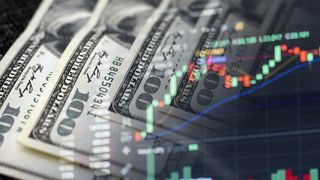Last Tuesday Fitch Ratings downgraded the US credit rating one notch from AAA to AA+. The decision makes it the second major rating agency ever to strip the US Government of its top tier sovereign credit rating, echoing a move made more than a decade ago by S&P Global Ratings following the 2011 debt ceiling crisis.
USSC Senior Economic Advisor Dr John Kunkel discusses the implications for US domestic politics and global markets.
Could you shed some light on the significance of the credit downgrade decision? Why has it incensed White House officials and how have markets reacted to the news?
The decision by Fitch to downgrade US public debt from AAA to AA+ put the sustainability of US fiscal management back in the spotlight just two months after a budget deal over the federal government’s borrowing limit. The snippy reaction of the White House – Treasury Secretary Janet Yellen called the decision “arbitrary and based on outdated data” – largely reflected political sensitivity to bad news at a time when the president is going all out to sell the virtues of “Bidenomics.”
The Fitch action also drew barbs from market heavyweights such as JPMorgan Chase’s Jamie Dimon (“ridiculous”) and high-profile economists such as Larry Summers (“absurd”) and Paul Krugman (“doesn’t make sense”). Summers pointed out that, compared with earlier in the year, economic prospects for the United States had improved “which is good for the creditworthiness of US debt.”
For investors, the decision was essentially a yawn. US Treasury securities represent the largest bond market in the world and are considered extremely safe by investors, a standing that is unlikely to be threatened by the views of ratings agencies. Their position is such as to underpin valuations for a whole range of financial market assets in global markets.
Fitch first warned the rating was under threat back in May, when Democratic and Republican lawmakers flirted with default in gridlocked debt ceiling negotiations. Although that crisis was ultimately averted, the credit grader cited a decades-long “erosion of governance” as a key factor in the ratings downgrade. Do you agree with their assessment that US political brinkmanship poses a significant threat to confidence in US fiscal management?
While the immediate economic impact of the Fitch downgrade is negligible, this doesn’t negate the larger issues at play surrounding US fiscal management and confidence in the United States as a predictable global actor. To talk of an “erosion of governance” is hardly heresy. And as the events of May this year illustrated, lawmakers have yet to break the cycle of periodic brinkmanship over the debt ceiling, where an eye to near-term political advantage in a highly polarised context trumps any serious attempt to deal with America’s underlying fiscal challenges.
Is Fitch saying there is now a greater prospect of US default? Not really. Perhaps anticipating the surprise and push back at the decision, the agency stressed an almost mechanical element to the downgrade, with US government debt forecast to grow to 118 per cent of GDP by 2025, more than two-and-a-half times the AAA median of 39 per cent.
The previous downgrade by S&P saw US stocks tumble and ushered in a period of persistent market volatility. Does the episode offer a guide on what we can expect in the long-term from Fitch’s decision? Or are current circumstances too different to draw useful lessons from 2011?
The decision by S&P in 2011 was the first ever credit downgrade of the United States by a leading rating agency. This had its own unique shock value on markets. While nothing in the past decade of US politics suggests any improvement in US fiscal management, factors other than rating agency decisions are likely to have much more purchase on growth and market performance into the future. It would be better to keep an eye on the larger factors driving investor returns relative to the past decade. Chief among them are inflation, changing demographics, the energy transition and geopolitical uncertainty.






